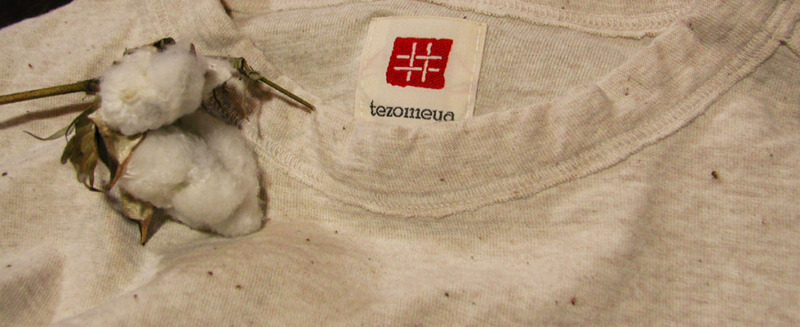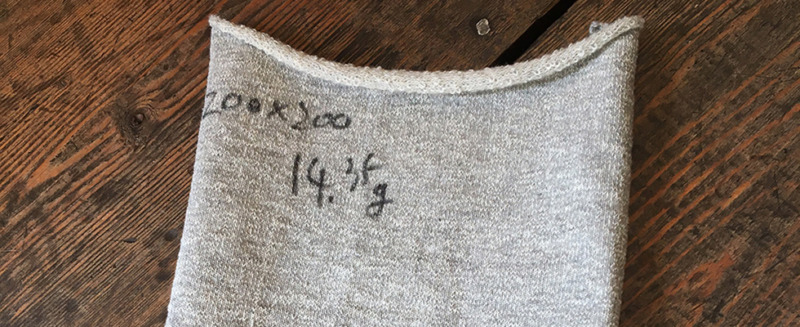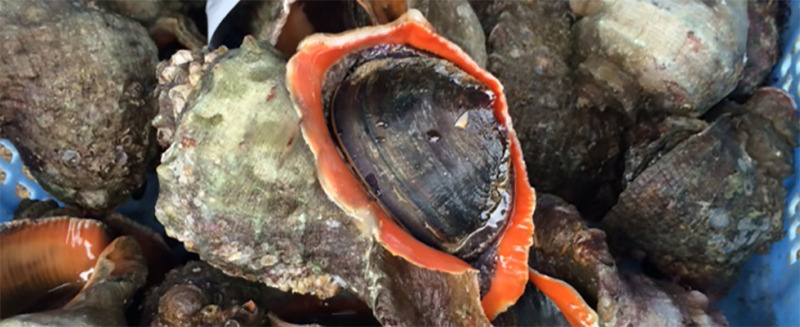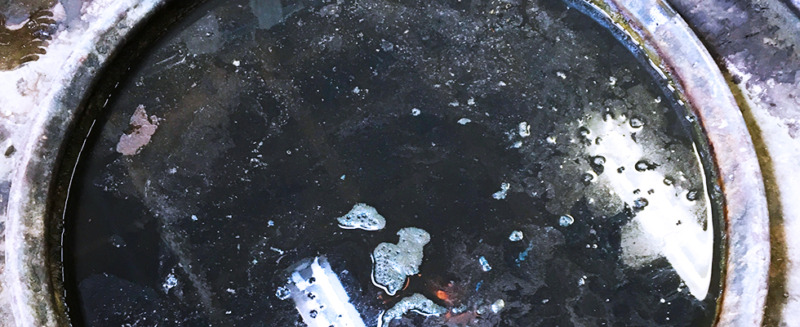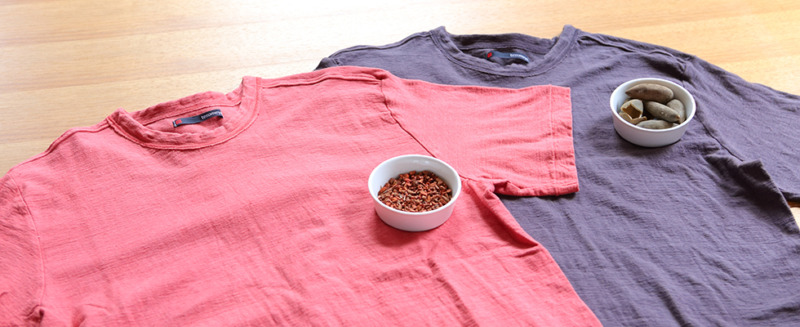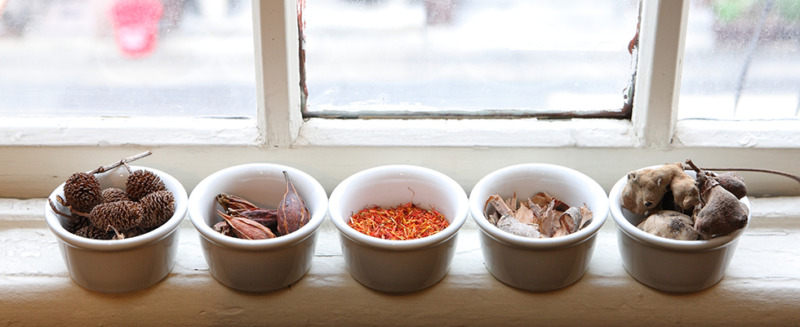tezomeya Blog
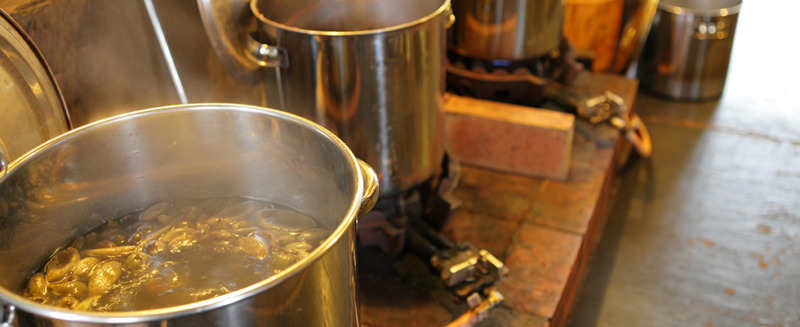
Plant color and dyeing work
All tezomeya items are dyed at a dyeing shop in a workshop in Kyoto.
Depending on the size of the item, up to 4 or 5 points can be dyed at a time. For example, a large coat or cloth is dyed one point at a time.
First, weigh the items to be dyed, then record the dyeing process, dyeing water, and dyeing process for each dye.
Then start with the plant firing. Repeat the process of firing, dyeing, mordanting and leaving the dye plant, and it takes 3 or 4 working days from the start of dyeing to the finish.
You can see them all at the workshop in Kyoto. Then, the dyed items are dried and labeled with a name and label and displayed at the next shop.
The oldest and rarest dyeing recipe in the world, “Yengi Ceremony Book”, records 38 colors of 10th centuries AD. While examining the dyeing literature that remained in the Edo period, including the materials of the Engi Ceremony Book.
At the same time, we make daily use of the latest scientific knowledge mainly on organic chemistry, and we are constantly devising the dyeing process so that the same color and the same quality can be obtained whenever possible.
Therefore, updating the dyeing process is a daily occurrence. Recording and verifying the dyeing work is one of the essential processes so that not only shop owners but also all staff can share the improvement of the dyeing work.
Tezomeya believes that the “intuition” from experience and knowledge is important for dyeing technology, but it is equally important for records and their sharing and standardization of work.
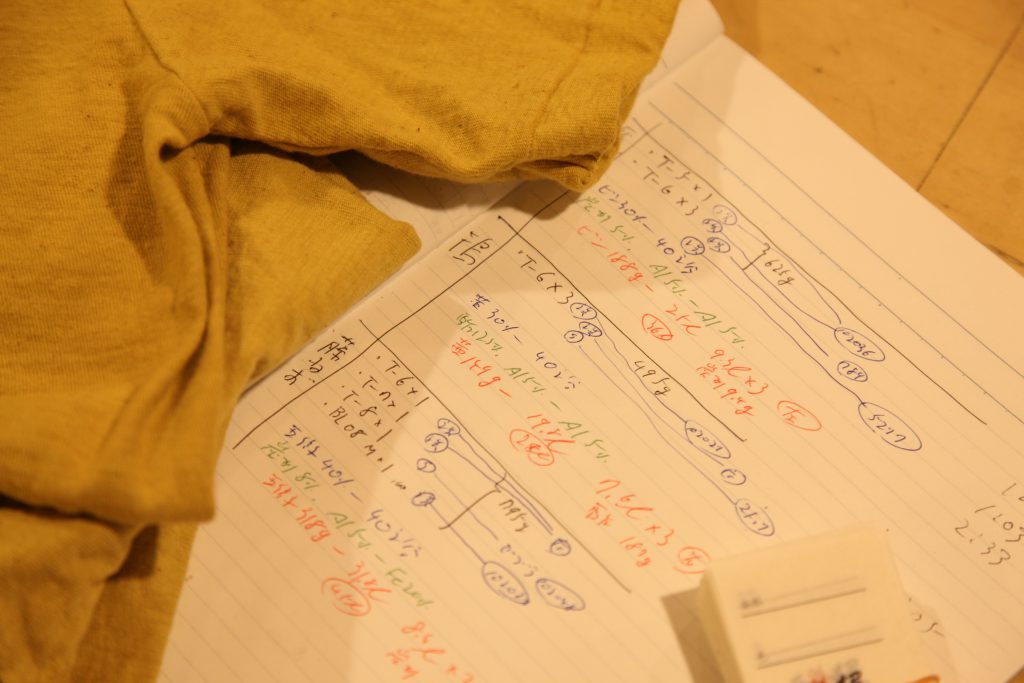
Still the opponent is a living thing. Unfortunately, dyes have individual differences.
And temperature and humidity change every day. There are many things that we do not understand yet, with our inexperienced experience and technology.
For example, we would appreciate your understanding of the subtle differences in finishes one by one as dyeing workshops that are still developing, and forgive them.
And if you have any questions, please let me know.
Don’t worry, “Is this something you can ask?”
We will answer everything we know.
tezomeya has neither patents nor utility models. In the first place, when we imitate the technology of our ancestors, we personally feel inconsistent when we declare intellectual property.
Dyeing process, fine technology, tips, dyes and mordants … all are disclosed without being wrapped.
In order to be able to associate with the colors of plants and plants for a long time, daily research and dyeing work continue.

